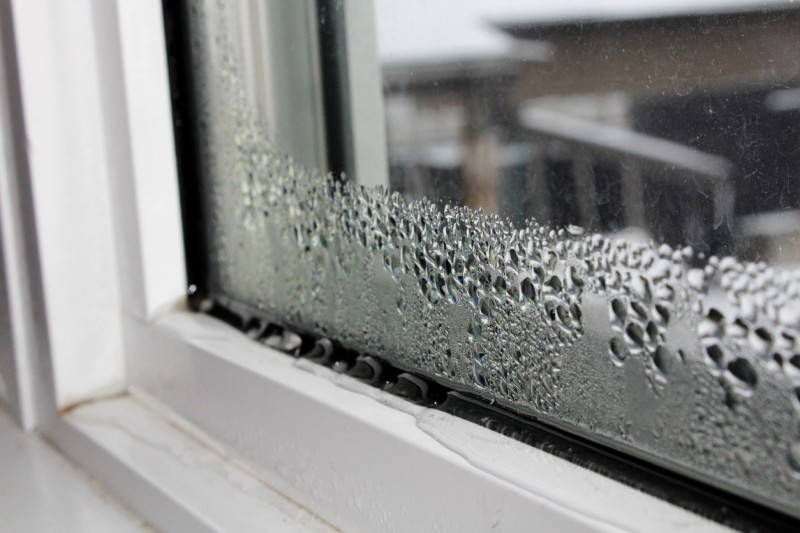
As the weather cools, you may notice that your windows ‘sweat’ whenever the temperature drops below 40 degrees F. Water condenses on the window and runs down to wet the frames and sills.
Condensation on windows is an indication that your indoor humidity levels are too high. You should aim to keep your indoor humidity at 50-55 percent during the cooler months. More than that and you’ll get water condensing on the cooler windows.
Modern homes with tighter building envelopes don’t allow indoor moisture to escape. One way to check your indoor humidity is with a hygrometer. This will allow you to measure and track your humidity to see which solutions work best.
When you burn gas or propane, the process releases water vapor, so if you use your fireplace in the winter, you may find that it increases humidity levels.
New home owners may find that excessive humidity levels are simply your new home drying out. Concrete, wood and other materials can take a year to acclimate.
Even older homes may have this problem as building materials dry out after a humid summer. If this is the case, you will find condensation only occurs at the beginning of the colder season.
If this problem persists, check for other sources of moisture like ground moisture moving up through a concrete slab.
A dehumidifier will provide a temporary solution, and it’s best to mitigate condensation and the resultant water on frames and sills as this may cause mold and mildew.
